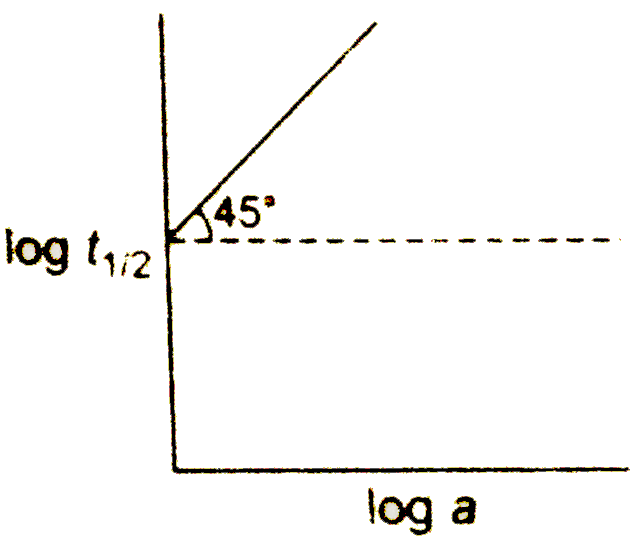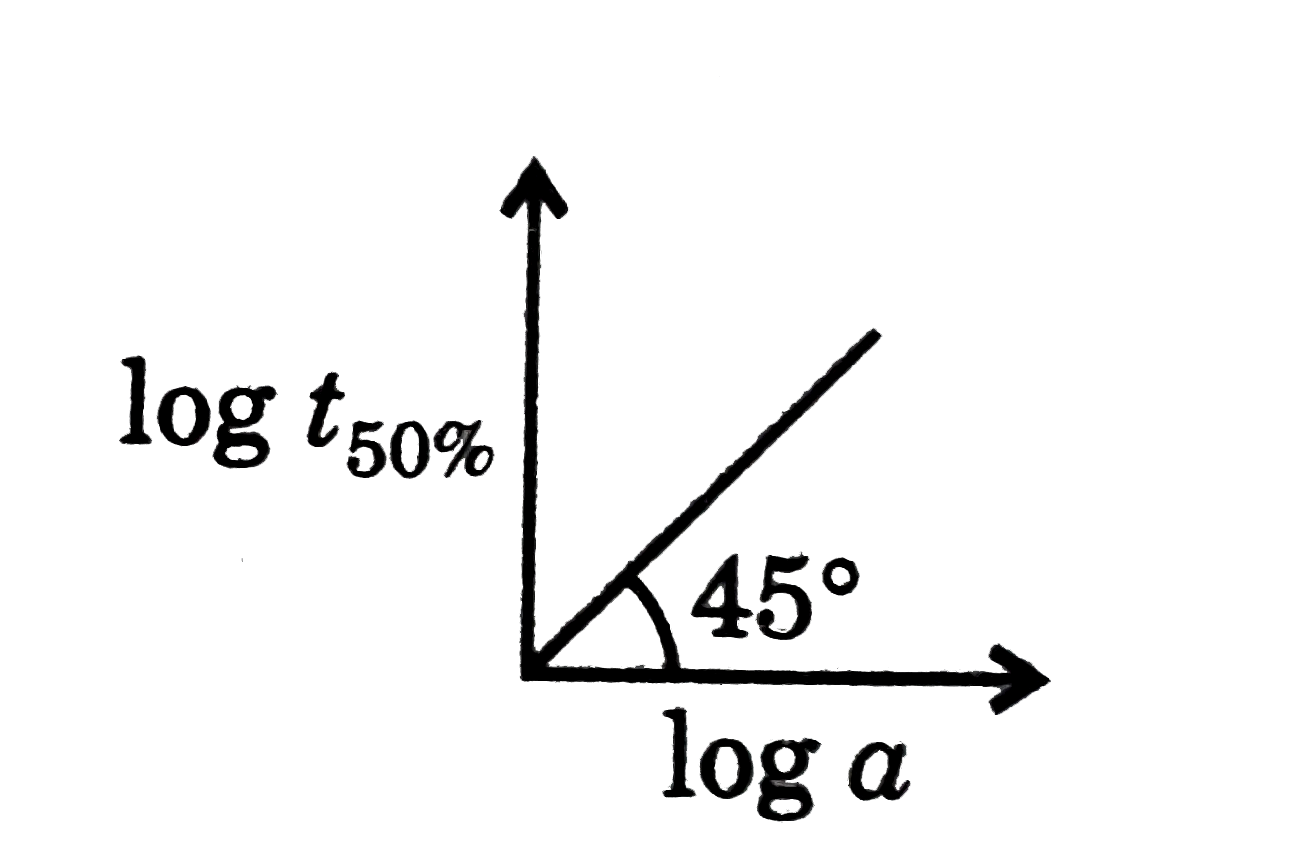What will be the order of reaction for a chemical change having logt12 vs log a? ( where a = initial concentration of rectant, t12 =half life)
 Solution in Punjabi
Solution in Punjabi
zero order
First order
Second order
None of these
The correct Answer is:A
Step by step video & image solution for What will be the order of reaction for a chemical change having log t_((1)/(2)) vs log a? ( where a = initial concentration of rectant, t_((1)/(2)) =half life) by Chemistry experts to help you in doubts & scoring excellent marks in Class 12 exams.
Topper's Solved these Questions
- BOOK - NARENDRA AWASTHICHAPTER - CHEMICAL KINETIC & NUCLEAR CHEMISTRYEXERCISE - Level 1 (Q.3 To Q.32)1videos
CHEMICAL KINETIC & NUCLEAR CHEMISTRY
- BOOK - NARENDRA AWASTHICHAPTER - CHEMICAL KINETIC & NUCLEAR CHEMISTRYEXERCISE - Level 1 (Q.33 To Q.62)2videos
CHEMICAL KINETIC & NUCLEAR CHEMISTRY
- BOOK - NARENDRA AWASTHICHAPTER - SURFACE CHEMISTRYEXERCISE - Level -21videos
SURFACE CHEMISTRY
Similar Questions
The following data pertain to reaction between A and B
S.No[A][B]RatemolL−1molL−1molL−1sec−1I1×10−22×10−22×10−4II2×10−22×10−24×10−4III2×10−24×10−28×10−4
Which of the following interference(s) can be drawn from the above data
(a) Rate constatnt of the reaction 10−4
(b) Rate law of reaction is k[A][B]
(c ) Rate of reaction increases four times on doubling the concentration of both the reactant Select the correct answer codes:
a) a,b and C
b) a and b
c) b and c
d) c alone02:04View Solutioncolumn Icolumn IIP.Zero order reaction1.t1/2α1[A]0Q.First order reaction2.t100%=[A]0/kR.second order reactions3.Involves at least two reactantsS.Pseudo unimolecular reaction4.[A]=[A]0e−kt
06:14View Solutionfor the graph below, select correct order of temperture ?
 04:15View Solution
04:15View SolutionFollowing is the graph between logt1/2 and loga (a initial concentration) for a given reaction at 27∘C.

Find the order of reaction.02:37View SolutionWhat will be the order of reaction and rate constant for a chemical change having log t_(50%) versue log concentration of (a) curves as:
06:14View SolutionAssertion: Half-life period of a reaction of first order is independent of initial concentration.
Reason: Half-life period for a first order reaction t1/2=2.303Klog2.View SolutionWhat will be the order of reaction for a chemical change having logt12 vs log a? ( where a = initial concentration of rectant, t12 =half life)
 02:22View Solution
02:22View SolutionWhat will be the order of reaction and rate constant for a chemical change having log t_(50%) vs log concentration of (a) curves as:
04:15View SolutionPlotting a graph of log t_(1//2) against log [A]_(0) of a rectant for a first order reaction, the slope will
02:22View SolutionFor a second order reaction, 2Ararr Products, a plot of log t_(1//2) vs log a (where a is initial concentration) will give an intercept equal to which one of the following?
02:54View SolutionAssertion : Half-life period of a reaction of first order is independent of initial concentration . Reason : Half-life period for a first order reaction t_(1//2) = (2.303)/(K) "log" 2
02:07View SolutionFor a second order reaction, 2" A"to Products, a plot of log t_(1//2) vs log a (where a is the initial concentration) will give an intercept equal to which of the following ?
03:18View SolutionWhat will be the order of reaction and rate constant for a chemical change having log t50% vs log concentration of (a) curves as:
 02:58View Solution
02:58View SolutionWhat will be the order of reaction for a chemical change having logt12 vs log a? ( where a = initial concentration of rectant, t12 =half life)
 03:39View Solution
03:39View SolutionFor a chemical reaction variation in concentraction, ln[R] vs. time (min) plot is shown below :

If initial concentration of the reactant is half of the original concentration, how will t1/2 change?05:24View SolutionFollowing is the graph between logt1/2 and loga (a initial concentration) for a given reaction at 300K

Find the order of reaction.03:01View Solution

